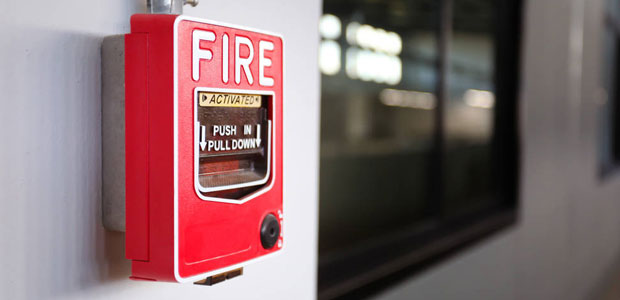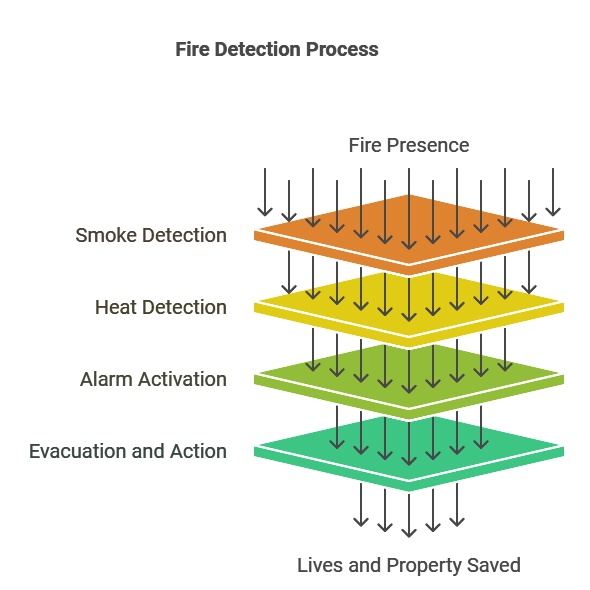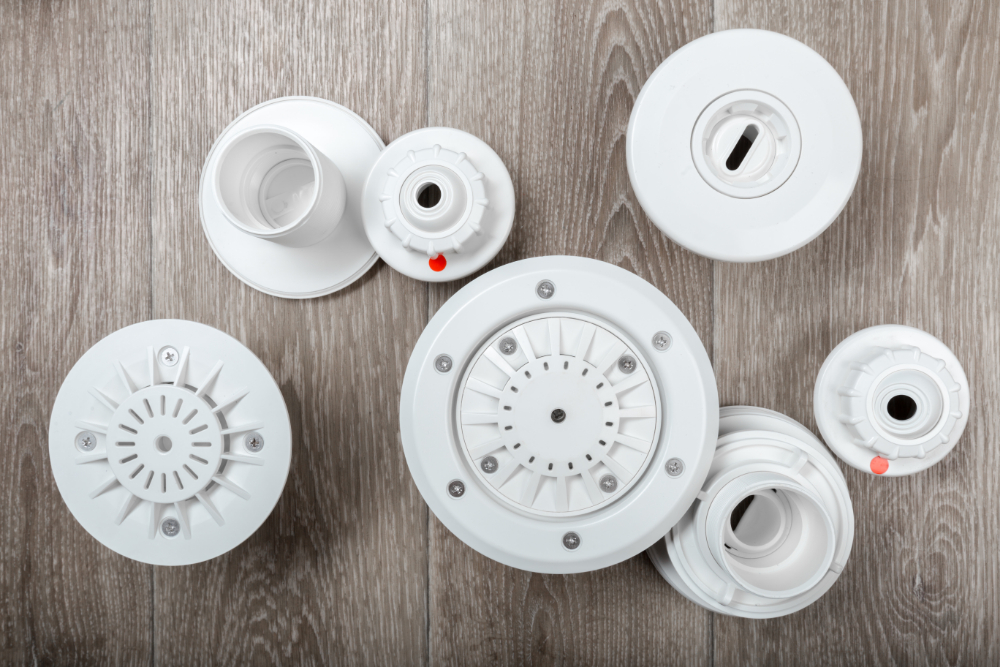
Guide to Fire Detection Systems: Everything You Need to Know
Fire detection systems are very important in protecting lives, property, and infrastructures. With increasing building fire risks in current residential, commercial, and industrial set-ups, the provision of an effective fire detection system is more important than ever.
This guide explores everything you need to know about fire detection systems, their components, how they work, and why they are a must for modern safety protocols.
What Is Fire Detection?
Fire detection is the identification of the phenomenon called fire using technologies and systems. The aim of this activity is usually to accomplish the earliest warning for saving lives from possible death at fire incidents, minimizing damage to property, and making possible timely evacuation and firefighting actions.
Historically, fire detection depended largely on human observation - often fraught with unreliability and delay. Today's systems, however, are equipped with modern sensors and alarms that respond to the presence of smoke, heat, or flames, and provide swift and sure detection of fire.

What Is Fire Detection Equipment?
Fire detection equipment comprises all the tools and devices used to identify and alert occupants of a fire. These include:
-
1) Smoke Detectors: Measure the contained particulate matter in the air.
-
2) Heat Sensors: Identify temperature changes.
-
3) Flame Detectors: The place where delicate sensors can detect a flame using infrared or ultraviolet wavelengths.
-
4) Fire Alarms: Signaling from evident sounds or visibility that sensors responded to the fire.
These devices have been installed for a specific function within a complete fire detection plan.

Which Fire Detection System Is Best for Your Needs?
Choosing the right fire detection system is dependent on the size and type of property, potential fire risks, and the budget.
-
1) Conventional Systems: These are small area systems with a limited number of zones ideal for smaller buildings.
-
2) Addressable Systems: This is the best option for large properties where it is possible to pinpoint the exact location.
-
3) Wireless Systems: It is suitable for taking care of older buildings that are very hard to wire.
-
4) Hybrid Systems: The combination of both conventional and addressable points.
It is essential to involve a fire safety professional in this process.
How Fire Detection and Alarm Systems Work:
Fire detection and alarm systems operate through a network of sensors, control panels, and alarms. Here's a step-by-step breakdown of their working mechanism:
-
1) Detection: Sensors detect smoke, heat, or flames.
-
2) Signal Transmission: The sensors send signals to the control panel.
-
3) Alert Activation: The control panel triggers alarms, informing occupants and authorities.
-
4) Response: Fire suppression systems may be activated, and emergency protocols initiated.
This whole process is seamless, so it ensures quick response times and minimizes fire-related risk.
Understanding Fire Detection Control Panels:
The fire detection control panel functions as the brain of the fire detection system itself. It receives information from sensors, processes it, and triggers alarms/controllers as and when necessary.
The fundamental attributes include:
-
1) Zoning Capabilities: Enables monitoring of predetermined specific areas.
-
2) Remote Access: This can be controlled directly using smartphones or a computer.
-
3) System Diagnostics: Fault detection ensures optimum functioning.
Investing in an appropriate control panel means maximizing the efficiency and reliability of the fire detection system.
The Importance of Fire Detection Alarms
In simple terms, fire detection alarms are used to give warning to occupants when a fire hazard develops. Such systems include:
-
1) Audible Alarms: sirens or horns very loud.
-
2) Visual Alarms: flashing lights particularly suitable for the hearing impaired.
-
3) Voice Evacuation Systems: give verbal instructions to people in a building to direct them to safety.
If designed properly, an alarm system increases the opportunity for safe evacuation during emergencies.
Overview of Fire Detection and Alarm Systems
A fire detection system is a system intended to detect fire and it will have other mechanisms to notify and direct the occupants. Proper maintenance and regular testing enable the system to work as intended during emergencies.
Commercial Fire Detection Systems
Fire safety is a must because in a business you will protect the employees, customers, and your assets.
Generally, the most advanced commercial systems are:
-
1) Integration with building management systems.
-
2) Large Area Detection.
-
3) Regular monitoring provision from third parties.
-
4) Investing in those systems is important for continuity of business and compliance.
Advancements in Fire Detection Technology
Fire detection technology in the past few years has dramatically changed the methods of detecting and managing fires. Recently built systems have smarts embedded into them to increase efficiency, accuracy, and integration.
-
1) AI and Machine Learning: AI-equipped systems measure patterns to distinguish between real fires and false alarms, hence significantly reducing unnecessary disruptions.
-
2) Internet of Things (IoT): Such devices empower connected fire detection systems to be monitored in real-time and remotely accessed using mobile applications.
-
3) Wireless and Cloud-Based Systems: These innovations do away with excessive wiring, thus allowing centralized control from all parts of the globe.
-
4) Environmental Sensors: Its other usages include advanced detectors analyzing the air quality, which enhances fire safety detection in complex environments.
Thus, the advanced technologies ensure that fire detection systems are not only advanced but also align with the changing needs of safety.
Fire Detection in Residential Settings
Fire detection systems are found not only in big buildings, but they are also as important as well for homes. Different homemaking types of fire detection systems serve as a safety measure for families by giving them comfort.
-
1) Standalone Smoke Alarms: Affordable and easy to install, these are suitable for small residences.
-
2) Interconnected Systems: Ensures that all alarms in a home sound simultaneously when one is triggered, ideal for larger homes.
-
3) Smart Fire Detectors: Connected to smartphones, these devices send real-time alerts even when you’re away from home.
When installing a fire detection system at home:
-
1) Place smoke detectors in every bedroom, hallway, and common area.
-
2) Test alarms monthly and replace batteries as needed.
-
3) Develop and practice a family fire escape plan.
Compliance and Legal Requirements:
Both residential and commercial properties are required to comply with fire safety regulations. Failing to meet these standards can lead to penalties and increased risks during emergencies.
For commercial buildings, fire detection systems must adhere to:
National Fire Codes: Such as NFPA 72 in the U.S.
Local Fire Department Requirements: Specific codes may vary by region.
Insurance Standards: Many insurers mandate fire detection systems as part of coverage terms.
For residential properties, compliance may include:
-
1) Placing smoke alarms in appropriate locations.
-
2) Following guidelines for installation, such as appropriate positioning and periodic maintenance.
-
3) Staying updated on regulations ensures your system remains compliant and effective.
How to Maintain a Fire Detection System:
Regular Maintenance is very important, for every given second, the fire detection system becomes functional at the time of its greatest need. Unmaintained fire detection systems can easily result in failure or, at best, false alarms, both scenarios which could prove highly costly.
-
1) Monthly Testing: Run through all smoke and heat detectors to guarantee operational status.
-
2) Battery Replacement: Replace batteries at least once a year or as recommended by the manufacturer.
-
3) Sensor Cleaning: Remove dust and debris that may impair the performance of sensors.
-
4) Professional Inspections: Schedule an inspection with qualified technicians every year to identify and remediate possible issues and concerns.
Regular maintenance will help you lengthen time - and the reliability with which your detection system will serve you.
Choosing the Right Fire Detection Equipment Supplier
Choosing the right dealer is vital when it comes to high-quality fire detection equipment.
Here’s what to look for:
-
Certifications: Ensure the dealers give a full package of equipment certification at state and international safety standards.
-
Product Range: A good supplier always offers a wide range of smoke detectors, fire alarm systems, and solutions.
-
Technical Support: Look for a supplier who will offer installation assistance, user training, and after-sales support.
-
Reputation: Check reviews and testimonials from customers on reliability and quality of service.
Partnering with a reliable supplier ensures your fire detection system is robust and durable.
Conclusion
Fire detection systems are kind of the backbone for the safety and security of any home or business. They provide early warnings, save human lives, and make sure that property damage is minimized. Knowing the types of systems, their components, and the latest technology uses will enable one to make good decisions regarding fire safety enhancement.
Regular maintenance and compliance with regulations strengthen the assurance that these systems remain reliable when it matters the most. A fire detection system is a well-spent money and rather precious investment when it comes to being a precocious requisite safety measure, even one that ends up saving lives.
FAQs
1) Are wireless fire detection systems reliable?
Yes, modern wireless systems are highly reliable and offer the added benefits of easy installation and remote management.
2) Can fire detection systems be integrated with smart home devices?
Absolutely, Many systems now offer smart home compatibility, enabling users to monitor and control fire safety devices through their smartphones.